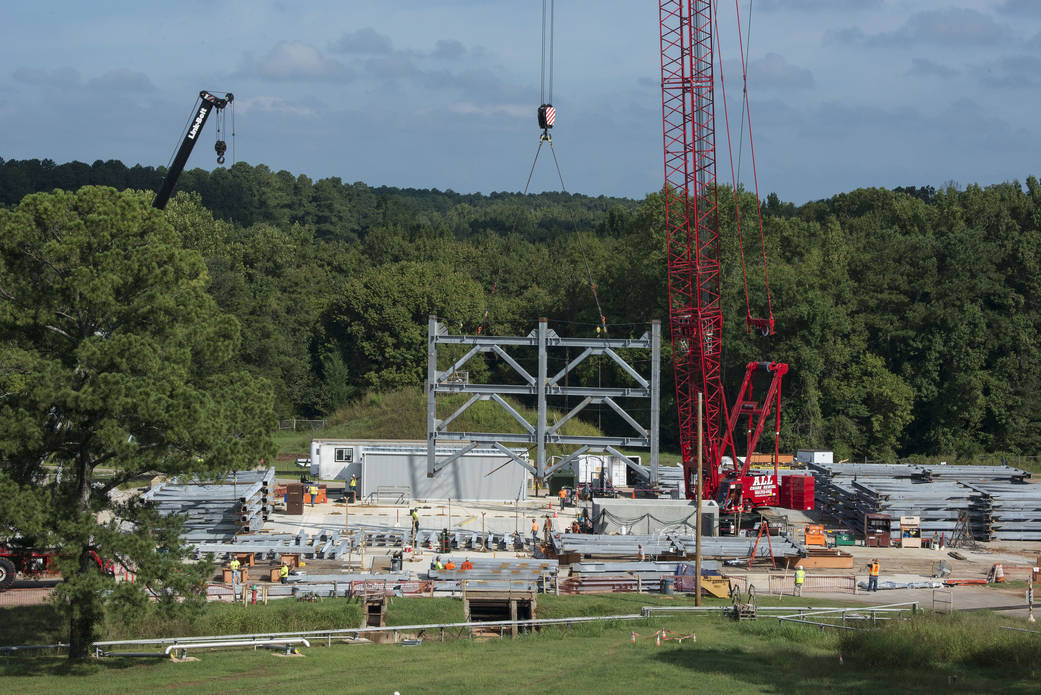
A crane positions the first steel piece for the twin towers of a 215-foot-tall structural test stand for NASA’s Space Launch System (SLS), the most powerful rocket ever built. The steel was welded into place Aug. 31, 2015, at NASA’s Marshall Space Flight Center in Huntsville, Alabama. When completed, hydraulic cylinders at Test Stand 4693 will push, pull and bend the liquid hydrogen tank of the SLS’s massive core stage to subject the tank and hardware to the same loads and stresses they will endure during launch. During the tests, engineers will also apply pressure loads to the tank, which will be partially filled with inert nitrogen rather than combustive liquid hydrogen. SLS will carry astronauts in NASA’s Orion spacecraft on deep space missions, including to an asteroid placed in lunar orbit and ultimately to Mars. Test Stand 4693 is being built in Marshall’s West Test Area on the foundation of the stand where the Apollo Saturn V F-1 engine was tested during the 1960s.
Image credit: NASA/MSFC/Fred Deaton

























